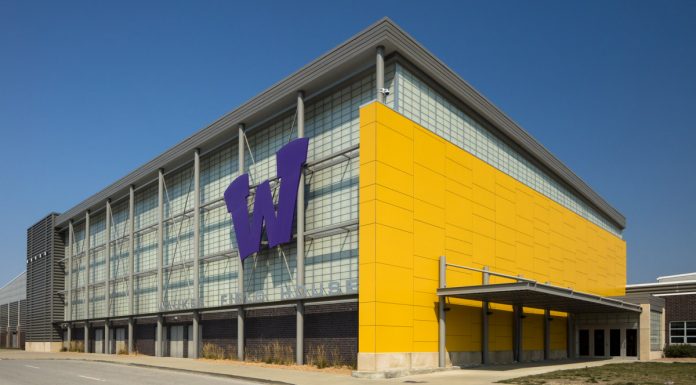Last week, Senate Republicans made public their Fiscal Year 2020 budget targets. They are proposing that state General Fund spending stay at the same level as the current fiscal year (FY 2019), with the state spending $7.6193 billion for the year. The Senate’s funding plan would allocate the dollars in the following manner:

The Senate’s targets have significant differences from what the House proposed earlier in February. House Republicans plan to spend $7.6680 billion in FY 2020, which is an increase of just $48.6 million over the current year’s spending levels. Percentage wise, the Senate increase is 0%, the House increase is 0.63%. The differences are:

What are the differences between the House and Senate? Let’s look at each budget area.
ADMINISTRATION & REGULATION
House – $52,420,985 Senate – $55,576,149
The Senate is proposing a funding level that is $3.155 million higher than the House. This is likely caused by the Senate paying for the Governor’s Broadband initiative in this budget, while the House Republican plan has Broadband funding coming from the Rebuild Iowa’s Infrastructure Fund (RIIF).
AGRICULTURE & NATURAL RESOURCES
House – $41,107,522 Senate – $39,961,522
The Senate is proposing a funding level that is $1.146 million lower than the House for this budget. Funding at this level would prevent the state from providing additional resources to the Department of Natural Resources for additional park rangers or increased funding for the ISU Veterinary Diagnostic Lab.
ECONOMIC DEVELOPMENT
House – $41,028,345 Senate – $41,628,345
The Senate is proposing a funding level that is $600,000 higher than the House for Economic Development.
EDUCATION
House – $961,044,271 Senate – $946,955,971
The Senate is proposing a funding level that is $14.088 million lower than the House for the Education budget. At the Senate’s level, it would very difficult to provide Community College funding at a level higher than what the Governor proposed. House Republicans have already committed to give community colleges a $7 million increase over FY 2019 – which is $2.338 million more than what the Governor had proposed.
The Senate’s funding level would also make it very tough to meet the Governor’s request for the Future Ready Iowa program. The House Republican funding plan already is committed to meeting the Governor’s request. General education support for the state’s three public universities would likely be significantly lower under the Senate’s proposed budget target.
HEALTH & HUMAN SERVICES
House – $1,941,888,698 Senate – $1,928,358,285
The Senate proposal is $13.350 million lower than the House for the HHS budget. At the Senate’s level, it would be very difficult to match the House’s commitment of an additional $19 million for Medicaid reimbursements to Iowa’s nursing homes. It would also be hard, under the Senate spending plan, to address the financial concerns of the state’s 82 critical access hospitals. House Republicans are providing $1.5 million in their budget plan to restore cost settlement for these Medicaid providers. And it would be tough to continue the momentum for improving Iowa’s mental health provider network at the Senate’s spending level, while the House has the resources to expand access to assertive community teams.
JUSTICE SYSTEMS
House – $770,370,501 Senate – $763,240,901
The Senate is proposing a funding level that is $7.130 million lower than the House for this budget. At the Senate’s level, it would be difficult to provide the funding necessary to maintain the current level of State Troopers while holding training academies to bring on an additional 10 troopers, as the House budget plan does. The Senate plan would also have trouble addressing issues within the Indigent Defense program and addressing staffing needs within the state’s correctional system.
STATE AID TO SCHOOLS & OTHER STANDING APPROPRIATIONS
House – $3,860,115,038 Senate – $3,843,610,788
The Senate is proposing a funding level that is $16.604 million lower than the House’s level. The difference is likely a decision to fund state technology programs within the RIIF budget, instead of the General Fund where the House is providing for it.
Another difference between the House and the Senate is in the amount of money left in the General Fund. With a difference of $48.6 million in spending, a person might expect that there would be a similar difference in the ending balance. But that is not the case. The Senate expects to have $311.8 million left over at the end of FY 2020, while the House level is $298.6 million. Why the much smaller difference? Revenue adjustments.
Senate Republicans have already announced that their budget targets also include $38.8 million in tax changes, with the phasedown of the Inheritance tax leading the way. That bill would reduce state revenue by $30 million in FY 2020 and another $85 million in Fiscal Year 2021. The impact of this change could also be felt on last year’s tax reform law. The reduction in revenue from the phase-out of the inheritance tax could have the impact or delaying or preventing the state from ending federal deductibility as was envisioned in the 2018 tax reform law.
Work on the budget will continue next week, allowing the House to be ready to move budget bills once











